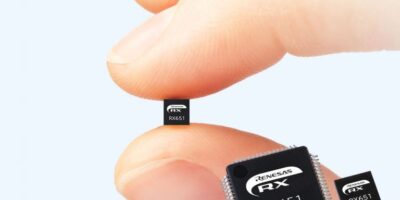Compute power for artificial intelligence (AI) inference at the edge is reduced, says Microchip, when using the memBrain neuromorphic memory technology.
AI processing is moving from the cloud to the edge of the network, meaning that battery powered and deeply embedded devices are challenged to perform AI functions, such as computer vision and voice recognition.
Via its subsidiary, Silicon Storage Technology (SST), Microchip offers the memBrain which is based on SuperFlash technology and optimised to perform vector matrix multiplication (VMM) for neural networks. The memory technology is claimed to improve system architecture implementation of VMM through an analogue in-memory compute approach, which, in turn, is claimed to enhance AI inference at the edge.
Current neural net models may require 50M or more synapses (weights) for processing which can challenge off-chip DRAM bandwidths, causing a bottleneck for neural net computing and an increase in overall compute power. The memBrain stores synaptic weights in the on-chip floating gate, which significantly improves system latency, says Microchip. Compared to traditional digital DSP and SRAM/DRAM based approaches, it delivers 10 to 20 times lower power and “significantly reduced overall bill of materials (BOM)”.
The memBrain is expected to advance machine learning (ML) capacities in edge devices, with reduced power in memory compute operations in AI.
SST will present Microchip’s memBrain product tile array-based architecture at the AI/ML session track on flash performance scaling at the 2019 Flash Memory Summit this week (6 to 8 August 2019) at the Santa Clara Convention Center in Santa Clara, California, USA.
SST offers design services for memBrain and SuperFlash technology and a software toolkit for neural network model analysis.
Silicon Storage Technology provides embedded flash technology in addition to developing, designing, licensing and markets proprietary and patented SuperFlash memory technology for the consumer, industrial, automotive and IoT markets.
SST was founded in 1989 and acquired by Microchip in April 2010 and is now a wholly owned subsidiary of Microchip.







